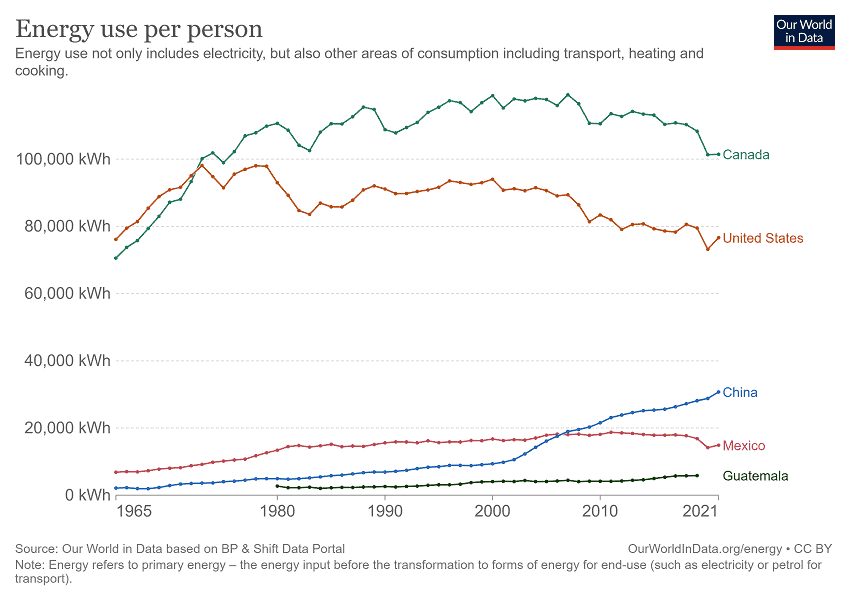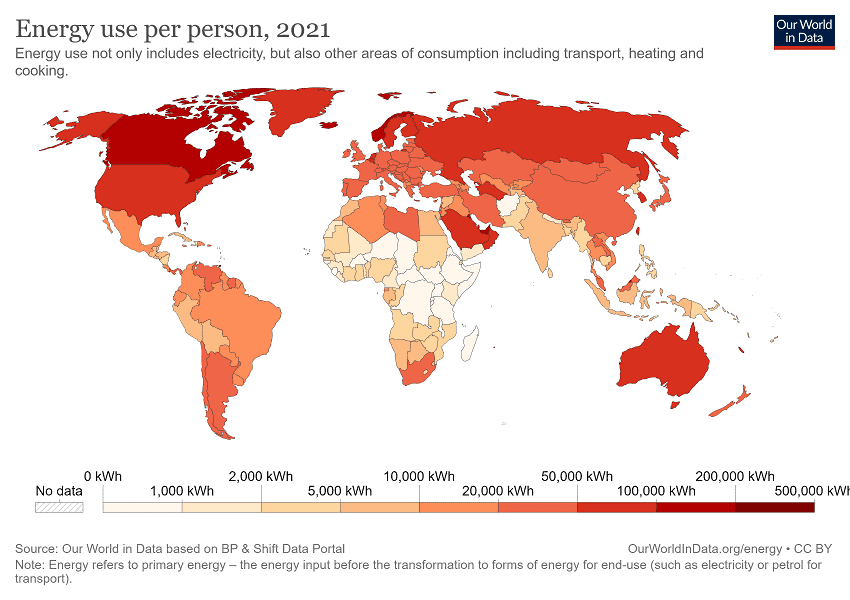Mexico’s energy policy has been under much scrutiny of late. On the one hand, President López Obrador has sought foreign investment in huge new renewable energy projects. On the other, his nationalistic energy policies have led to a trade dispute with the United States and Canada, who have accused Mexico of unfairly favoring state-owned companies — such as Pemex and the CFE — over foreign suppliers of clean energy.
But how much energy does Mexico use? How does its fossil fuel reliance compare to other countries in the region? And how does its energy consumption break down across the country?
In 2021 – the last year with available data — Mexico used 337 terawatt-hours of energy, or 14,884 kilowatt-hours per person. That includes not only electricity, but also other areas of consumption such as transport, heating and cooking.
The country’s per capita energy use has stayed relatively stable over the last few decades, even declining slightly in recent years — although the figures for 2020 and 2021 were likely affected by pandemic lockdowns.
For comparison, the average person in the United States used over five times more energy than the average Mexican in 2021 — 76,634 kilowatt-hours — while the average Canadian used a whopping 101,459 kilowatt-hours.

At the other end of the scale, one of Mexico’s southern neighbors, Guatemala, used 5,847 kilowatt-hours per person in 2019, the last year with available data. Mexico’s per capita energy use puts it roughly in the middle of countries worldwide.
When it comes to fossil fuel reliance, however, Mexico is indeed a poor performer. In 2021, 87.9% of the country’s energy came from fossil fuels, with 10.5% coming from renewables and 1.6% from nuclear. For comparison, the U.S. got 81.4% of its energy from fossil fuels in 2021, while fossil fuels produced 64.2% of Canada’s energy.

Mexico performs slightly better if we look only at electricity, 72.7% of which comes from fossil fuels, 23.9% from renewables, and 3.4% from nuclear. The country still has a way to go to fulfill AMLO’s pledge of sourcing 35% of Mexico’s electricity from low-carbon sources by 2024, but with several new solar and wind megaprojects coming online in 2023, it is likely moving in the right direction.
More than 99% of Mexico’s population has access to electricity at home. According to a 2018 survey by the National Institute of Statistics and Geography (INEGI), 91.5% of households have at least one television and 71% have access to a washing machine, but only 43.5% have a water heater – those that do rely mostly on gas boilers.
INEGI calculates that 41% of households have between one and five lightbulbs; 42% have between six and ten; and 16% have eleven or more.
Electricity use is also unevenly distributed across the country. In 2021, Nuevo León was the state with the highest electricity consumption, consuming 16.88 gigawatt-hours, while Campeche had the lowest, using only 1.4 gigawatt hours. The variation is explained partly by population differences and also by the uneven spread of heavy industry and mining.
Mexico News Daily
